Indian Polity and Governance - 3 | Current Affairs & Hindu Analysis: Daily, Weekly & Monthly - UPSC PDF Download
Patents (Amendment) Rules, 2024
Why in News?
Recently, the Ministry of Commerce and Industry has notified the Patents Amendment Rules, 2024, which introduce important modifications to the patent practices and procedures in India.
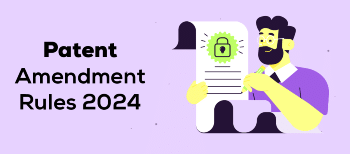
What are the Key Changes Introduced Under Patents (Amendment) Rules, 2024?
- Reduced Timeline for Filing a Request for Examination (RFE): The period for submitting the RFE has been decreased from 48 months to 31 months from the priority date. This change aims to speed up the patent examination process, allowing applicants to receive decisions more quickly.
- Simplified Submission of Form 3: Applicants are now required to submit only a single updated Form 3 after they receive the First Examination Report (FER). This streamlining reduces administrative burden and simplifies the process for inventors.
- Introduction of ‘Certificate of Inventorship’: This new provision acknowledges the contributions of inventors to patented inventions. Previously, Indian patent certificates did not identify inventors; now, inventors will be explicitly recognized for their work.
- Frequency of Filing Statements: The requirement for filing statements regarding working patents has been modified from annually to once every three financial years. This adjustment lessens the reporting burden on patent holders.
- Amendments in Pre-grant and Post-grant Opposition Procedures: The timelines for recommendations from an Opposition Board and the response times for applicants have been revised. This aims to create a more efficient opposition process.
- Divisional Applications Clarified: A divisional application can now be filed for an invention disclosed in either a provisional or complete application, or a further divisional application. This amendment aligns with the Delhi High Court’s ruling in the Syngenta Limited v. Controller of Patents and Designs Case, 2023, which clarified that divisional applications can be submitted for parent applications that disclose multiple inventions.
Delhi Excise Policy - Enforcement Directorate Arrests Delhi Chief Minister
Why in news?
Delhi Chief Minister Arvind Kejriwal was arrested by the Enforcement Directorate (ED) in connection with a money laundering case linked to the Delhi Excise Policy. This arrest marks the first time a sitting Chief Minister has been detained, occurring shortly after the Delhi High Court denied Mr. Kejriwal protection from coercive actions by the agency.
The arrest was a significant event given the ongoing scrutiny of the new excise policy and allegations surrounding it.
What is Enforcement Directorate (ED)?
- The Enforcement Directorate, established in 1956, began as an 'Enforcement Unit' under the Department of Economic Affairs.
- In 1957, it was rebranded as the Enforcement Directorate.
- Currently, it operates under the Department of Revenue, which is part of the Ministry of Finance.
Functions of the ED:
- Enforces the Foreign Exchange Management Act, 1999 (FEMA).
- Implements provisions under the Prevention of Money Laundering Act (PMLA).
- Powers include asset attachment, search, seizure, arrest, and prosecution for violations under these laws.
Appointment of Director of ED:
- The Director is appointed by the central government based on recommendations from a committee.
- This committee is headed by the Central Vigilance Commissioner and includes Vigilance Commissioners, the Home Secretary, the Secretary of DOPT, and the Revenue Secretary.
About Delhi Excise Policy 2021-22
The Delhi Excise Policy 2021-22, which was implemented on November 17, 2021, aimed to overhaul liquor sales in the city by shifting operations from government to private entities. The primary goal was to enhance customer experience and eliminate black marketing.
- The city was divided into 32 zones for liquor sales, inviting firms to bid on these zones.
- Licenses for 849 retail outlets were issued through open bidding by the Excise department.
- Under the previous policy, there were 864 liquor shops, with 475 operated by government entities and 389 by private operators.
- Shops were allowed to offer discounts, and the number of dry days was reduced from 21 to 3.
- The policy proposed home delivery of liquor and suggested lowering the legal drinking age from 25 to 21, along with extended hours for shop operation until 3 AM, although these were not implemented.
The Controversy Surrounding the Policy:
Prior to its implementation, the Chief Secretary of Delhi reviewed the policy and identified procedural inconsistencies and irregularities.
- The report accused Deputy CM Sisodia of modifying the excise policy without the necessary approval from the Lieutenant Governor.
- It claimed that his decisions led to financial losses exceeding Rs 580 crore to the exchequer.
- Allegations surfaced regarding kickbacks received by Delhi government officials from alcohol business owners for favorable treatment.
- These funds were purportedly used to influence the Assembly elections in Punjab and Goa in early 2022.
Investigations and Arrests
The report prompted a referral to the Central Bureau of Investigation (CBI), leading to the arrest of Deputy CM Manish Sisodia, along with 14 others, including AAP communications in-charge Vijay Nair.
- Two investigations are ongoing: one by the CBI and another by the ED related to alleged money laundering connected to the excise policy.
- The ED reported that the alleged proceeds of crime exceeded Rs 292 crore and emphasized the need to clarify the operational methods involved.
- It was alleged that a scheme was devised to favor private entities in the wholesale liquor market, with a set margin of 12%, resulting in kickbacks of 6%.
- It was claimed that AAP leaders received kickbacks totaling Rs 100 crore from a group known as the South Group.
Key Legislative Framework
Prevention of Money Laundering Act, 2002:- The PMLA aims to prevent money laundering and confiscate property derived from such activities. It was first published on January 20, 2003, and came into effect on July 1, 2005.
Foreign Exchange Management Act, 1999:
The FEMA consolidates and amends laws pertaining to foreign exchange in India.
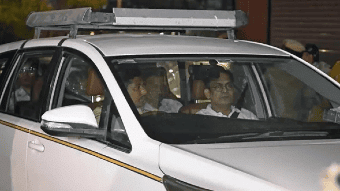
Uncontested Electoral Victory
Why in News?
Recently, the Bharatiya Janata Party (BJP) candidate from the Surat Lok Sabha constituency in Gujarat has been declared elected unopposed. This decision followed the rejection of the nomination papers from other candidates, alongside the withdrawal of their nominations.
What are the Requirements for Valid Nomination?
- Section 33 of the Representation of the People Act (RPA), 1951 outlines the criteria for a valid nomination.
- An elector who is at least 25 years old can contest Lok Sabha elections from any constituency in India.
- The proposers for the candidate must be electors from the same constituency where the nomination is filed.
- For candidates representing recognized parties (national or state), only one proposer is required.
- Candidates from unrecognized parties or independents must have ten proposers to support their nomination.
- A candidate is allowed to file up to four nomination papers with different sets of proposers to ensure at least one set is valid.
- According to Section 36 of the RPA, the Returning Officer (RO) cannot reject a nomination for minor defects; however, if a signature is found to be not genuine, it is a valid ground for rejection.
- Section 53(3) states that if the number of candidates is fewer than the seats available, the RO must declare those candidates elected unopposed.
What Led to Nomination Rejection in Surat Lok Sabha Constituency?
- The Congress party candidate filed three sets of nomination papers.
- A BJP member raised an objection, claiming the proposers' signatures were not genuine.
- Affidavits were submitted by the proposers stating they did not sign the nomination papers.
- As the proposers could not be presented to the RO within the required timeframe, all nomination papers were rejected.
- The substitute candidate from the Congress party also had their nomination rejected for the same reason.
- This situation allowed the BJP candidate to be declared the winner by default.
What Does Legal Recourse Entail?
- Article 329(b) of the Constitution, in conjunction with the RPA, 1951, states that no election can be contested except through an election petition filed in the relevant High Court.
- One of the grounds for filing such a petition can be the improper rejection of nomination papers.
- This means the only legal option available is to file an election petition in the Gujarat High Court.
- The RPA mandates that High Courts aim to resolve these petitions within six months, though this timeline has often been ignored.
- Ensuring faster resolution of election petitions would be a positive step forward.
What are the Concerns Regarding Declaring Results in Uncontested Elections?
- Democratic Implications: Uncontested victories raise concerns about the legitimacy of declaring candidates elected without a competitive process, potentially undermining democratic representation.
- The current system favors candidates who contest, as the RPA allows for a complete boycott which results in zero votes for all candidates, challenging the essence of democracy.
- This situation prompts discussions on reforms such as establishing a minimum vote percentage for winning candidates or transferring uncontested seats to nominated individuals.
- Voter Engagement and Choice: Uncontested elections limit voter participation and choice, denying constituents the chance to express their preferences through voting.
- In uncontested elections, there is a victor but no defeated party, leading to a lack of competition.
- Electors who withdraw or are disqualified are effectively barred from contesting, diminishing the electoral process.
- The introduction of the None of the Above (NOTA) option aimed to inform political parties about voter dissatisfaction, but has been criticized as ineffective.
- Despite receiving significant votes in recent elections, NOTA does not alter the outcome, as the candidate with the most votes is still declared the winner.
Way Forward
- Amending the First-Past-the-Post (FPTP) System: The FPTP system declares the candidate with the highest votes the winner, which can lead to outcomes where elected candidates receive less than half the total votes.
- Consider introducing a minimum vote percentage requirement to ensure that candidates have a significant mandate before being elected.
- Handling Lack of Candidates: Explore the possibility of transferring seats to the nominated category, where the President can nominate qualified individuals if no candidates emerge for elections.
- Strengthening the NOTA Option: Investigate ways to enhance the impact of the NOTA option, treating it as a valid vote and ensuring voter dissatisfaction is reflected in election results.
- Speedy Disposal of Election Petitions: Ensure timely resolution of election petitions related to nomination rejections or electoral disputes, with High Courts aiming to conclude these cases within six months.
Supreme Court Upholds EVM System
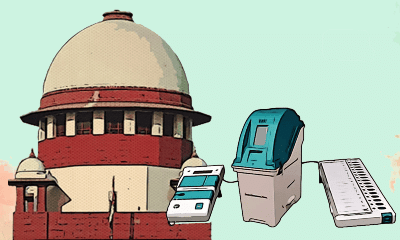
Why in news?
Recently, the Supreme Court upheld the electronic voting machine (EVM) system and dismissed a plea to reinstate paper ballots. This ruling has implications for the electoral process in India, especially concerning the reliability and integrity of electronic voting.
Background of EVM VVPAT Verification Case
The NGO Association for Democratic Reforms (ADR) sought to overturn a 2017 decision by the Election Commission to use opaque glass on VVPAT machines, limiting voter visibility.
The petitioners requested that:
- Return to using ballot papers
- Printed slips from VVPAT machines be provided to voters for verification and placed in the ballot box for counting
- Count 100% of the VVPAT slips in conjunction with electronic counts
Key Takeaways from the Supreme Court Judgment:
- The Court rejected all petitions for paper slips to be handed to voters before being placed in ballot boxes.
- Refusal to challenge Section 49 MA of the Conduct of Election Rules, which penalizes voters for false complaints about voting discrepancies.
- Refusal to mandate cross-verification of 100% EVMs and VVPATs; currently, only 5% are verified randomly in constituencies.
Suggestions for Improvements:
- The Supreme Court suggested the Election Commission examine the implementation of an electronic machine for counting paper slips.
- Storage of Symbol Loading Units (SLUs) must be secure for at least 45 days post-election results.
- Post-poll checks should be conducted on 5% of EVMs to ensure integrity, with costs covered by candidates requesting checks.
About Association for Democratic Reforms (ADR):
Founded in 1999 by professors from IIM Ahmedabad, ADR focuses on electoral reforms.
- Notable interventions have included:
- Disclosure of candidates' criminal backgrounds and assets.
- Advocacy for the inclusion of the NOTA (None of the Above) option in EVMs.
- Challenging the electoral bonds scheme in 2024.
Voters' Rights:
- The Supreme Court stated that while voters have the right to ensure their votes are accurately counted, this does not equate to a right for 100% VVPAT counting or physical access to VVPAT slips.
- Voter rights can be safeguarded through other measures.
Superiority of EVMs Over Ballot Paper System:
- Eliminates booth capturing by limiting vote casting speed.
- Reduces invalid votes and associated disputes.
- Offers administrative convenience and eco-friendliness by reducing paper use.
- Over 41,629 random verifications conducted with no mismatches reported.
Checks for Integrity of EVMs:
- Voting secrecy is maintained, with transparent windows for voter verification.
- Counting occurs in the presence of polling agents.
- Periodic checks by presiding officers to ensure vote counts match.
- Random checks of VVPAT slips against electronic results enhance accountability.
About Electronic Voting Machine (EVM):
- A portable device for conducting elections.
- Manufactured by Bharat Electronics Ltd. and ECIL.
- Consists of a ballot unit, control unit, and VVPAT unit.
- Legal provisions under Section 61A of the Representation of the People Act, 1951.
- Introduced in trials in 1982, with nationwide deployment in 2001 and full use in the 2004 general elections.
About Voter Verifiable Paper Audit Trail (VVPAT):
- An independent system for verifying votes via printed slips.
- First used in the 2013 Nagaland elections, implemented nationwide in 2019.
Problems Associated with EVMs and VVPATs:
- Potential hacking vulnerabilities, though ECI claims devices are standalone.
- Sampling limitations for VVPAT verification may miss defective machines.
- Lack of accessibility for certain voter groups.
- High costs associated with procurement and maintenance of machines.
Suggestions for Transparency in VVPAT:
- Implement machine audits for all commands executed.
- Upgrade existing machines for better functionality.
- Increase recount samples to enhance statistical significance.
- Conduct mock polls to verify EVM correctness.
- Adopt a scientific approach to VVPAT matching.
- Introduce totaliser machines to enhance voter privacy.
Conclusion
- Given the scale of the Indian electorate, improvements in EVMs are crucial for future elections.
- Open dialogue and trust in the electoral process are essential for reinforcing voter confidence.
Engaging India's Youth in Voting
Why in News?
As India prepares for the 18th Lok Sabha elections, a troubling trend is evident: the reluctance of the youngest eligible voters to engage in the electoral process.
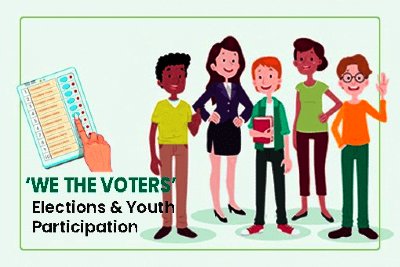
Historical Trends:
- Fewer than 40% of voters aged 18 to 19 have registered for the 2024 elections, raising alarms about youth participation.
- Delhi, Bihar, and Uttar Pradesh exhibit the lowest enrollment rates.
- Despite the influence of political discussions on social media, many young individuals remain hesitant to vote, even though they are passionate about social issues and protests.
- Bihar shows only 9.3 lakh registered voters out of a potential 54 lakh (17%), despite its large youth population.
- Similar low enrollment trends are seen in states like Delhi, Uttar Pradesh, and Maharashtra.
Lack of Political Education:
- Many youths believe that the education system does not sufficiently prepare them to grasp the political process and its importance.
- There is a deficit in education regarding civic engagement and voting significance.
- Critical thinking skills and political awareness are not adequately covered in school curricula.
Absence of Youth-Centric Agendas:
- Political parties often neglect to promote agendas that resonate with younger voters, leading to a sense of disconnection.
- Key issues such as job opportunities and affordable higher education are frequently overlooked by political parties.
Inadequate Representation:
- Despite being a major demographic group, youth are often underrepresented in political decision-making bodies.
- This underrepresentation results in policies that fail to address young people's needs and concerns.
Lack of Engagement:
- Young voters often face limited opportunities for meaningful participation in the political landscape.
- There is widespread disillusionment with top-down governance structures.
Social Pressures:
- Social stereotypes and negative perceptions can deter young people from engaging in politics.
- Emphasis on money and muscle power in politics diverts focus from genuine participation and activism.
Disconnect from Issues:
- Many young voters feel disconnected from political issues that impact their lives.
- They perceive political decisions as irrelevant to their immediate concerns.
Technological Influence:
- Overreliance on social media for political information can lead to misinformation and superficial interactions with political issues.
How Voter Disinterest Puts Democracy at Risk?
Disenfranchisement:
- Disenfranchisement refers to the removal of voting rights, often due to legal obstacles, hindering citizens' participation in democracy.
- Many migrants face disenfranchisement because they cannot travel to their registered polling stations, as required by law.
- While it is possible to re-register to vote in a new location, it demands proof of a fixed address, which many impoverished individuals lack.
- Social disenfranchisement persists despite constitutional guarantees (Article 326) that are supposed to ensure equitable electoral participation.
Undermining Democratic Principles:
- Disinterest among voters undermines democracy, which relies on active citizen engagement in elections.
- When citizens disengage, they forfeit their role in collective decision-making, weakening the foundations of democratic governance.
Perpetuating Exclusion:
- Disinterested voters allow a minority to dominate governance, perpetuating a cycle of exclusion for marginalized communities.
- Lack of voter participation maintains inequality and injustice, as the voices of underrepresented groups are neglected in policymaking.
Questioning Legitimacy:
- Low voter turnout raises doubts about the legitimacy of electoral results, undermining public trust in the democratic system.
- When a large segment of the population abstains, the mandate of elected officials may be questioned, affecting the credibility of democratic institutions.
Way Forward
- Engage young voters through appealing political agendas and enhance their understanding of the political system.
- Advocate for greater representation of youth in political decision-making processes.
- Provide platforms for young voices to be acknowledged in societal and political discussions.
- Recognizing the importance of every vote is crucial in overcoming disenfranchisement.
- Encourage active participation in democracy to safeguard its principles and ensure inclusive governance.
- Focus on states with large youth populations, addressing issues relevant to young adults during political campaigns, and dispelling stereotypes about Gen Z's social awareness.
- Empower India's youth by highlighting the impact of their decisions and fostering awareness of local and national issues.
- Encourage informed choices and emphasize the consequences of non-participation in the democratic process.
- Leverage the potential of digitally connected and socially conscious youth to promote activism and social responsibility.
- Explore the feasibility of implementing secure online voting to cater to the digital generation.
Constitutional Promise of Autonomy: Article 244(A)
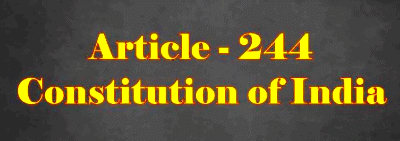
Why in News?
Recently, in Assam's predominantly tribal Diphu Lok Sabha constituency, candidates from all political parties have pledged to implement Article 244(A) of the Constitution, aiming to establish an autonomous 'state within a state.' The demand for autonomy in the region dates back to the 1950s movement for a separate hill state. Despite the creation of Meghalaya in 1972, leaders of the Karbi Anglong region chose to remain with Assam, hoping for autonomy through Article 244(A).
What is Article 244(A) of the Indian Constitution?
- Article 244(A) is part of the Indian Constitution, specifically in Part X, which outlines a special administrative framework for areas designated as 'scheduled areas' and 'tribal areas.'
- This article was introduced through the Twenty-second Amendment Act in 1969.
- It empowers Parliament to create a law that can establish an autonomous state within Assam, which can include all or some of the tribal areas mentioned in the Sixth Schedule.
What is the Sixth Schedule of the Indian Constitution?
- The Sixth Schedule contains provisions for the governance of tribal areas in the states of Assam, Meghalaya, Tripura, and Mizoram.
- Autonomous Districts: Tribal regions in these states are classified as autonomous districts while still remaining under the state's executive authority.
- The governor has the authority to reorganize these districts, which includes modifying their boundaries, changing their names, or even splitting them into multiple autonomous regions if there are different tribal communities.
- Legislative Considerations: Laws enacted by Parliament or the state legislature do not automatically apply to these autonomous districts unless they are adapted with specific modifications.
Autonomous District Councils: Each autonomous district is governed by a district council that consists of 30 members, with 4 being appointed by the governor and the remaining 26 elected through adult franchise for a standard term of 5 years, unless disbanded earlier.
- These councils have the power to legislate on various matters such as land, forests, water resources, shifting cultivation, village governance, property inheritance, marriage, divorce, and social customs.
- However, all laws passed by these councils require the governor's assent to become effective.
- Court Functions: The councils are also responsible for establishing village councils or courts to resolve disputes between tribes and to adjudicate cases. They handle appeals from these cases.
- The jurisdiction of the high court over these matters is determined by the governor.
- Administrative Reviews: The governor can appoint commissions to review the administration of districts and has the authority to dissolve councils based on those reviews.
|
38 videos|5264 docs|1112 tests
|





















